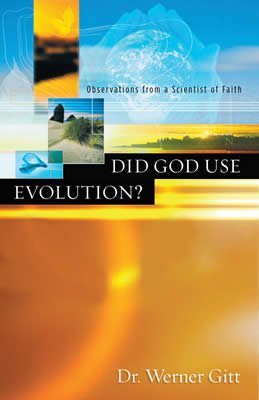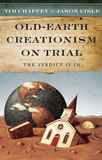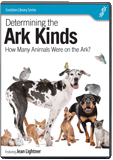
4.2 “Each According to Its Kind” (OB14)
From the creation account, it is clear that all living beings were created in clearly separate groups—each according to its kind.
For biologists, kinds of organisms are the fundamental building blocks, just as the chemical elements are for a study of chemistry. Rolf Siewing defines “kind” according to two criteria [S6, p. 172]:
- From the view of reproductive biology, a kind is a fertile community which exists under natural conditions and amongst whom unrestricted gene interchange is possible (biospecies).
- From the structural viewpoint a kind possesses the same constructional plan (morphospecies).
Evolution: In the evolutionary view, all systematic categories are assumed to be related, and, consequently, that a phylogenetic tree exists. In setting up this tree, evolution is faced with an irresolvable problem. Peters and his co-authors (quoted in [G2, p. 49]) concede that one cannot set up any reconstruction that is inherently plausible. Some yardstick for measuring its plausibility must be available. In any case, we have a preordained theory, namely the theory of evolution. The circularity of this reasoning becomes clear: What has to be proved, has already been assumed to start with. The problem of evolutionary systematics to trace unknown, untraceable relationships, is painted as follows by Siewing [S6, p. 173]:
It is like an observer who views a flooded orchard with only the tips of the branches visible above the water. He does not know how these branches connect with one another, nor how they eventually connect with the tree trunks. The major part of evolution containing the gaps in the lines of descent is hidden under water. These gaps must be bridged methodically.
Scientific Objections: The essential quantity in all life-forms is the information contained in the genes. The pre-supposed evolutionary tree of descent (phylogenesis) is not controlled nor guided by information; thus, it is an impossibility according to informatics theory [G9, p. 16–17]. On the other hand, the development of embryos (ontogenesis) is a process which is controlled and guided by information. Recent discoveries in molecular biology have shown that very many mechanisms in living cells exist for the purpose of transferring exact information [S2]. This basic requirement for the constancy of the various kinds of organisms is conceded by G Osche, an evolutionary biologist [O2, p. 53]:
The set of genes of an organism is a finely tuned team, a balanced “genome” whose harmonious cooperation determines the orderly development of a living being. This finely balanced genome is extremely important for the organism, and is always transmitted unchanged at every single step of cell division and the division of cell nuclei and chromosomes. Before every cell division, the genetic code must be replicated, in such a way that exactly the same chemically defined configuration is formed. This identical replication of the genes guarantees the constancy of genetic information. Roughly speaking, this replication is responsible for the phenomenon that storks always hatch from stork eggs with all the characteristics of this kind of bird.
Mutations and selection cannot be a source of new or different information (see OB17). The evolutionist assumption that simple construction plans could produce more complex plans by means of mutations and selection is false according to information theory. No such event has ever been observed; on the contrary, the inverse is valid: The main result of heredity is to keep the distinguishing characteristics of all kinds of organisms constant.
In the process of sexual reproduction, new gene combinations are being formed continuously, so that every single individual has an unrepeatable, unique set of genes. Mammals possess approximately one million genes. Such large quantities, together with the very large number of possible combinations, are the reason why no two persons are identical. The same holds for all bisexual organisms. Reproduction is only possible within fixed boundaries; it cannot take place outside these boundaries. With their definition of basic types, Reinhard Junker and Siegfried Scherer express a similar view [J2, p. 207]:
All individuals who are directly or indirectly linked by cross-breeding, are regarded as belonging to one basic type, or whose germ cells, after actual fertilization, at least begin to develop into an embryo having hereditary characteristics of both parents.
The Bible: From the creation account, it is clear that all living beings were created in clearly separate groups—each according to its kind. This concise formulation has some important results which totally repudiate the evolutionary view:
- Man as well as all the kinds of plants and animals were created separately. This excludes the possibility of phylogenetic relationships.
- The great number of reproductive mechanisms did not evolve,
but were created at the beginning: “
. . . seed-bearing plants and trees on the land that bear fruit with seed in it, according to their various kinds
” (Gen. 1:11). - Life did not begin as a single primordial cell from which all other life-forms developed.
- The kinds form closed, complete groups. And there was also no primitive tree, no protofish, no first bird, and no primitive humanoids.
- The “kinds” mentioned in Genesis (Hebrew min; used only in singular!) could best be described as being similar to the basic types defined above. God created the original kinds with the ability to diversify into races.
Did God Use Evolution?
Per theistic evolution, God started the process of evolution and guided it over millions of years. This content analyzes and rejects the assumptions and results of the doctrine of theistic evolution.
Read OnlineRecommended Resources

Answers in Genesis is an apologetics ministry, dedicated to helping Christians defend their faith and proclaim the good news of Jesus Christ.
- Customer Service 800.778.3390
- © 2024 Answers in Genesis





